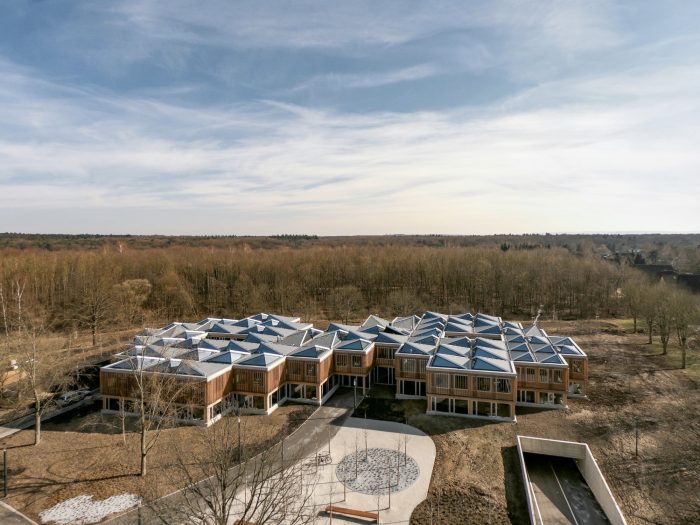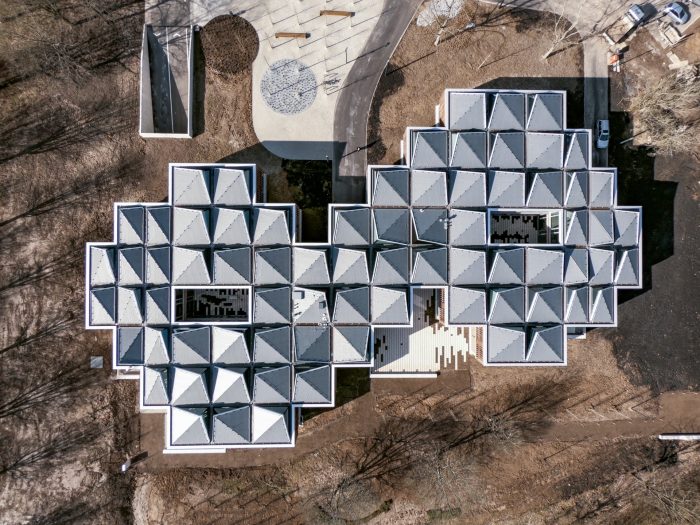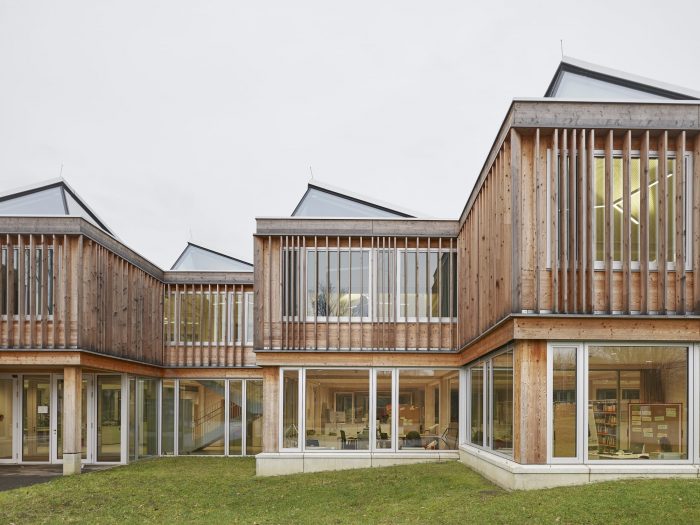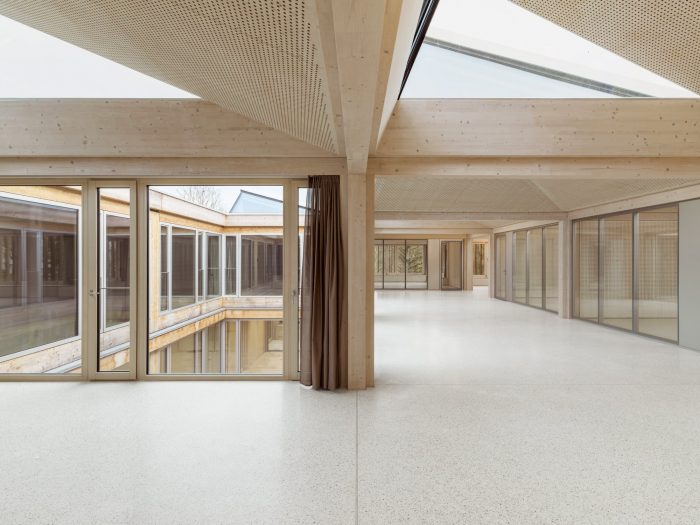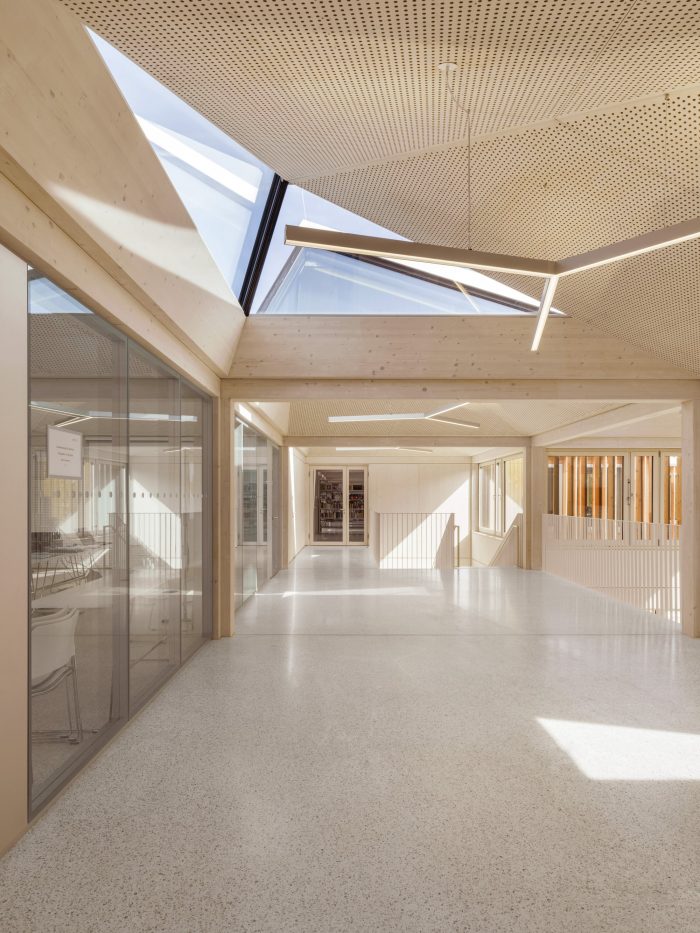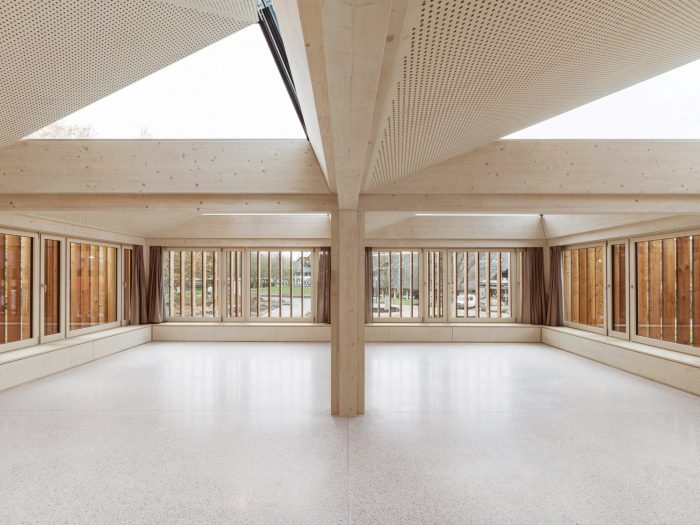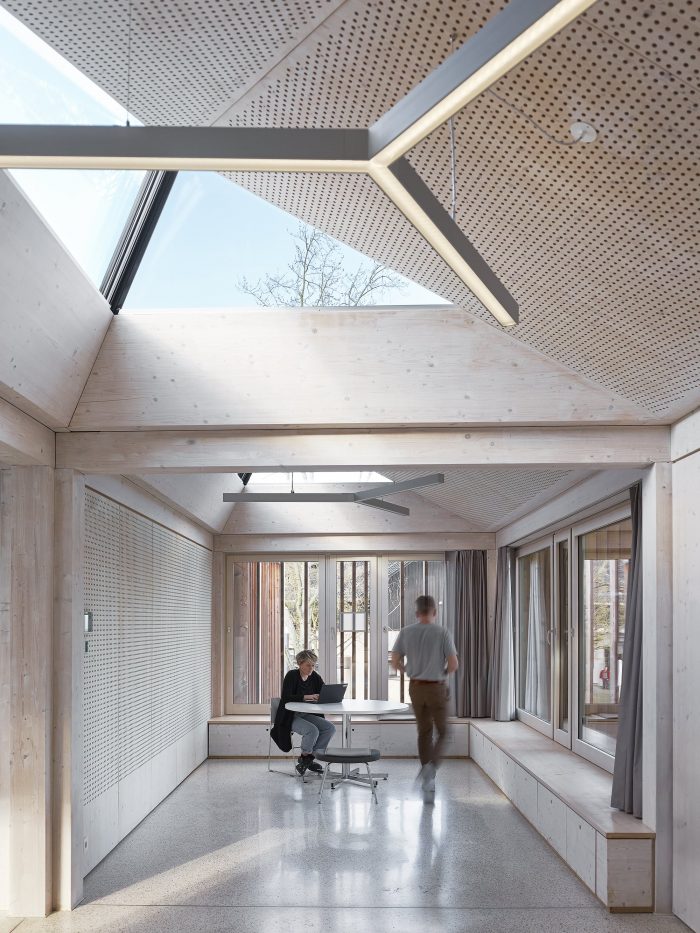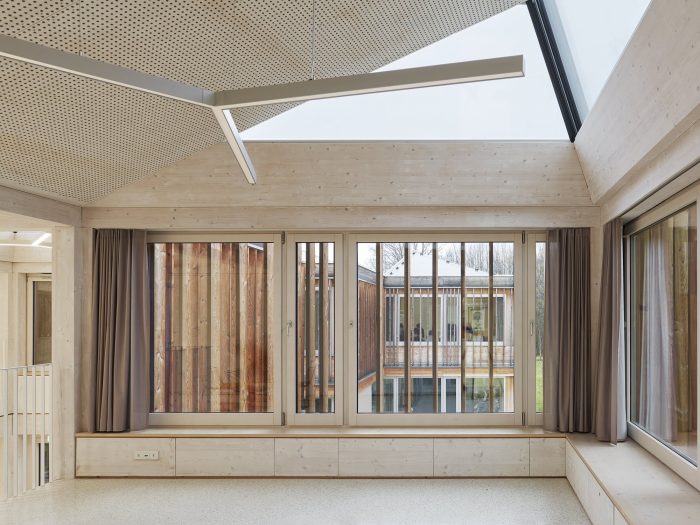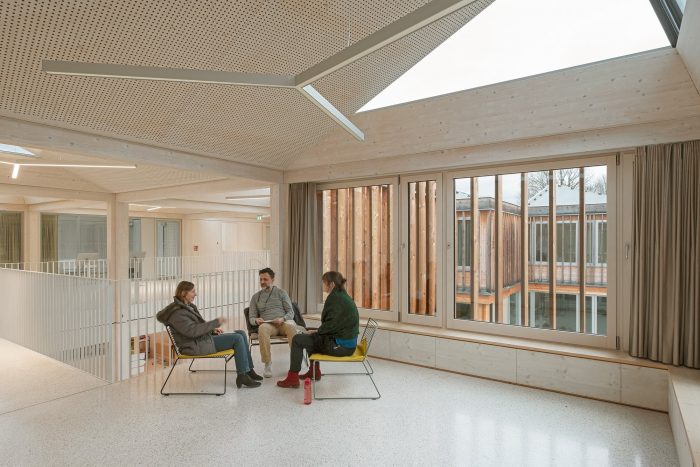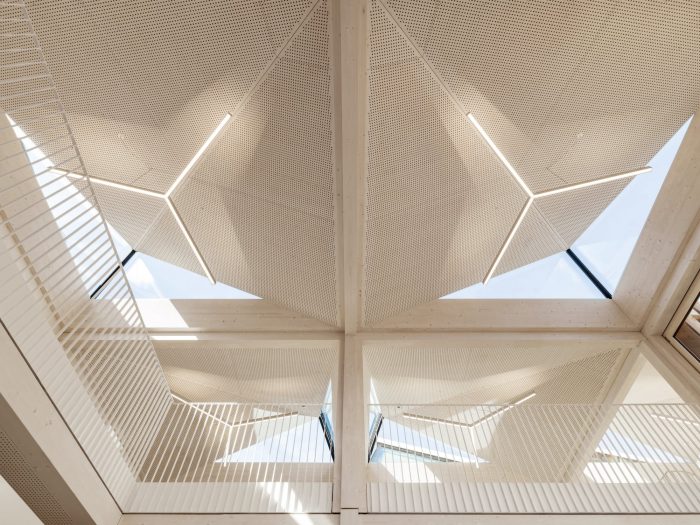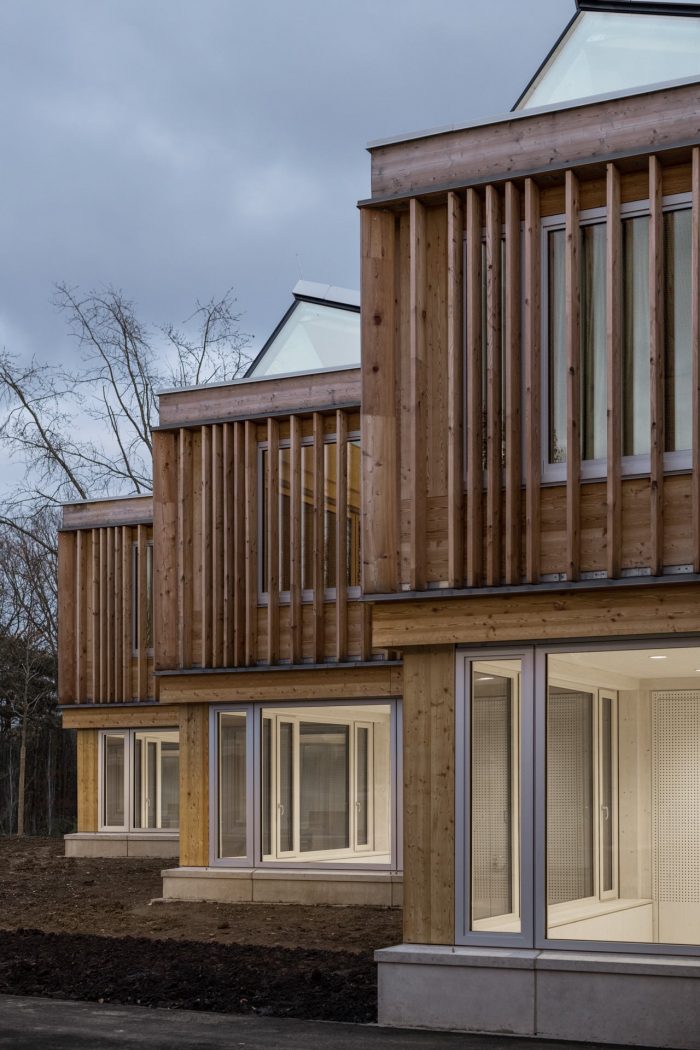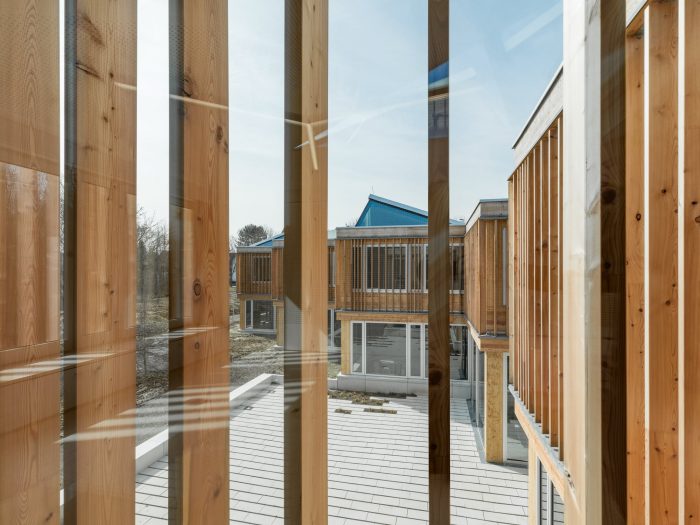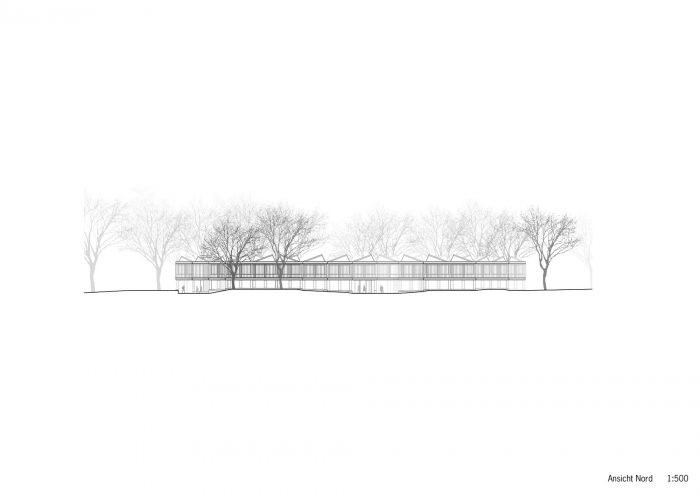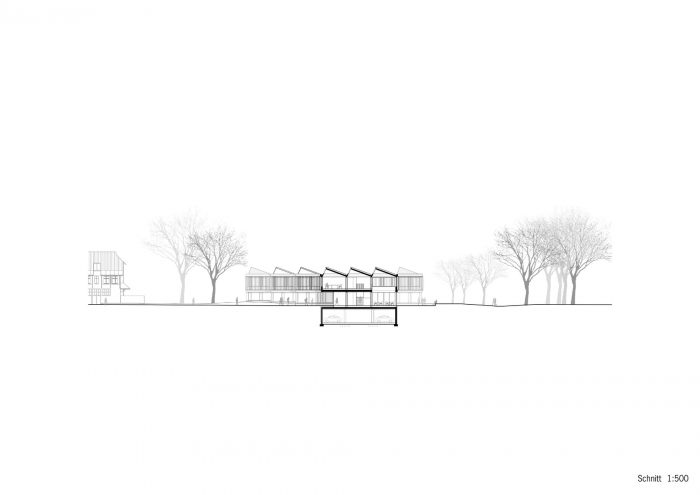国际合作学院(AIZ)在波恩-罗特根的新址的新建筑将作为德国国际合作协会(GIZ)主持下的国际技能发展的研讨会和培训中心使用。
The new building of the Academy for International Cooperation (AIZ) at its new location in Bonn-Röttgen will be used as a seminar and training center for international skill development under the auspices of the German Society for International Cooperation (GIZ).
我们一直在寻找一种建筑语言,象征着学习过程中的躁动–不断地寻找、反思、离题、好奇,向各个方向看,但尽管如此,还是以一种有规律、有系统的方式做这一切。结构性的、网状的或集群的设计概念生动地表达了这种多样性和秩序。全向的、多面的、阶梯式的立面允许从几乎任何位置看到两个或三个方向的景色,作为一种实现 “学习追求 “的方式。然而,从外部看,立面只能被认为是一个、两个或最多三个窗台,因此看起来很紧凑,规模适当。
We were looking for an architectural language that symbolizes the restlessness of the learning process – the constant searching, reflecting, digressing, being curious, the looking around in every direction, yet despite everything doing all this in a disciplined and systematic manner. The structurally driven, meshed, or clustered design concept vividly expresses this variety and order. The omnidirectional, multi-faceted, stepped facade allows for views in two or three directions from almost any location, as a way of enabling the “learning quest.” From the exterior, however, the facade can only be perceived as one, two, or at most three bays, and thus appears to be compact and at an appropriate scale.
独立的建筑体量在中间呈锥形–这自然形成了入口区和双高大厅内的咖啡馆/休息区。位于中心位置的大厅内的两个回旋楼梯在空间上和功能上连接了底层和高层。在这两层,学习空间围绕着位于中央区域两侧的内院布置,形成了清晰、短小的流通路线,从侧面看,光线充足。跨越各个建筑部分和楼层的内部景观,以及外部景观,提供了最大限度的清晰度和容易定位。
The freestanding building mass is tapered in the middle – this naturally forms the entrance area with the café/break area within the double-height hall. Two switchback staircases within a centrally located hall spatially and functionally connect the ground and upper floors. On both levels, learning spaces are arranged around the inner courtyards that are situated on either side of the central area, resulting in clear, short circulation routes that are well lit from the sides. The internal views across the various building sections and floors, as well as the external views into the landscape, provide for maximum clarity and easy orientation.
用于语言教学的各种大小的研讨室,可以部分地相互连接,被设计成在外围区域内进行遮蔽。这就创造了一个多模式的、以交流为导向的学习景观,它具有多功能性、多样性和自组织性,有利于开放以及封闭的学习、研究和工作。
The various-sized seminar rooms for language instruction, which can partially be interconnected, are designed to be sheltered within the peripheral zones. This creates a multimodal, communication-oriented learning landscape that is versatile, diverse, and self-organized, which facilitates open as well as closed learning, studying, and working.
设计的网状结构通过一个工程木质骨架来表达,其特点是具有经济跨度的清晰、连续的柱子网格。由于该结构只基于两种网格尺寸,结构单元之间的不同连接数量被减少到最低限度,最大限度地利用了模块化设计的潜力。
The meshed structure of the design is expressed through an engineered wood skeleton characterized by a clear, continuous grid of columns with economical spans. Because the structure is based on only two grid sizes, the number of different connections between structural units is reduced to a minimum, taking maximum advantage of the potential of modular design.
DGNB黄金标准(NBI-15)的基本标准是提高能源效率,以及相关的建筑一次和最终能源需求的低水平。集群式、经济配置的建筑结构与环保材料的选择相结合,确保了生态影响和生命周期成本的要求得以实现。
The fundamental criteria for the DGNB Gold Standard (NBI-15) are increased energy efficiency and the associated low primary and final energy demands of the building. The combination of the clustered, economically configured building construction together with the selection of environmentally friendly materials, ensures that the requirements for ecological impact and life cycle costs can be achieved.
Architects: Waechter + Waechter Architekten
Area : 4952 m²
Year : 2017
Photographs :Thilo Ross Fotografie, Achim Birnbaum Architekturfotografie
Country:Germany


